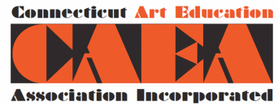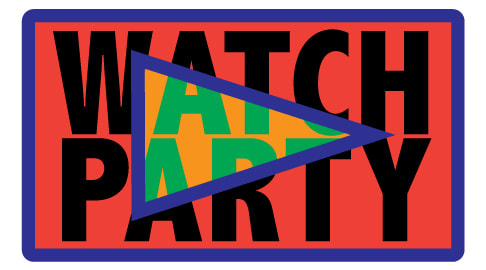|
CAEA WATCH PARTY PD
The CAEA Watch Party PD series, is a monthly event centered around NAEA webinars. These webinars are relevant, useful and useable. The watch party is an opportunity for our members to come together, watch the webinar together, and then engage in a facilitated discussion following the webinar. How this information applies to Connecticut teachers as well as resources and information will be shared. Join us and connect with your peers. No Registration is required for access, Just click on the link below to join the current Watch Party. |
Documenting Student Growth: Portfolio Development Through Student-Centered Art Education PracticesWednesday, May 8, 2024 | 7–8pm ET
Documentation and portfolios are multifaceted visual records that track, analyze, and represent student growth. The depth of documentation is strengthened through photography, audio recordings, transcriptions of their language, and dedicated time for reflection (for students and teachers). Visual arts portfolios capture the imagination, wonderings, and artmaking actions nurtured through student-centered art education practices and offer connections across grade levels and disciplines. Additionally, student portfolios are an advocacy tool providing insight into student thinking. The webinar presenters will share pre-primary, primary, and preK–12 strategies for organizing and sharing student progress with the broader community. Philosophical influences of Reggio Emilia, TAB, IB, and AP will also be discussed.
Documentation and portfolios are multifaceted visual records that track, analyze, and represent student growth. The depth of documentation is strengthened through photography, audio recordings, transcriptions of their language, and dedicated time for reflection (for students and teachers). Visual arts portfolios capture the imagination, wonderings, and artmaking actions nurtured through student-centered art education practices and offer connections across grade levels and disciplines. Additionally, student portfolios are an advocacy tool providing insight into student thinking. The webinar presenters will share pre-primary, primary, and preK–12 strategies for organizing and sharing student progress with the broader community. Philosophical influences of Reggio Emilia, TAB, IB, and AP will also be discussed.
Addressing Teacher Recruitment and Retention
Wednesday, June 5, 2024 | 7–8pm ET
NAEA is committed to supporting our current and future visual arts, design, and media arts educators. Pandemic burnout, early retirements, rise in school violence, lack of clear career pathways, and ongoing pedagogical cultural wars—among other challenges—make the recruitment and retention of art teachers increasingly more difficult. To better understand and address the obstacles that current and future art educators face, as well as the growing issue of educator staffing shortages, the NAEA Board of Directors has formed a national “Art Education Teacher Recruitment and Retention Task Force.” The Task Force is tasked with investigating the obstacles and opportunities to entering and serving the field of visual arts, design, and media arts education, and engage with the membership, peer organizations, and external experts to gather data and draft a report of findings and recommendations for short, mid, and long-term action to be presented to the Board. Join us as members of the NAEA Art Education Teacher Recruitment and Retention Task Force share their findings and recommendations for the association and the field.
Wednesday, June 5, 2024 | 7–8pm ET
NAEA is committed to supporting our current and future visual arts, design, and media arts educators. Pandemic burnout, early retirements, rise in school violence, lack of clear career pathways, and ongoing pedagogical cultural wars—among other challenges—make the recruitment and retention of art teachers increasingly more difficult. To better understand and address the obstacles that current and future art educators face, as well as the growing issue of educator staffing shortages, the NAEA Board of Directors has formed a national “Art Education Teacher Recruitment and Retention Task Force.” The Task Force is tasked with investigating the obstacles and opportunities to entering and serving the field of visual arts, design, and media arts education, and engage with the membership, peer organizations, and external experts to gather data and draft a report of findings and recommendations for short, mid, and long-term action to be presented to the Board. Join us as members of the NAEA Art Education Teacher Recruitment and Retention Task Force share their findings and recommendations for the association and the field.

